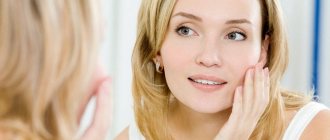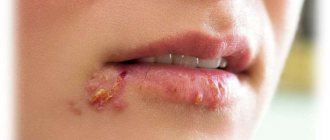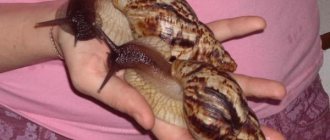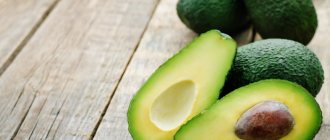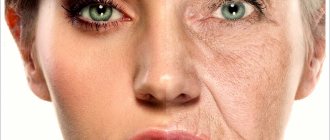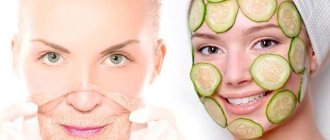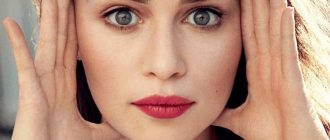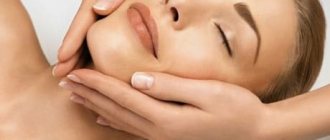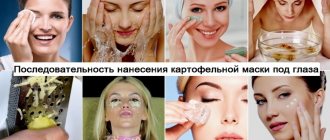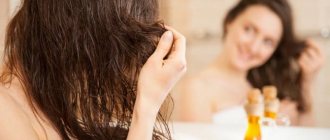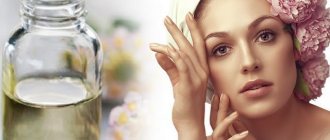Over the years, every person's face shows signs of aging. They can occur both in late adulthood and at an early age. Much depends on lifestyle, genetics, nutrition and climate. Women are more sensitive to external changes than men. After all, the face is the first thing people pay attention to when they meet. By looking at it, you can determine a woman’s age, as well as reveal how well she takes care of herself. To make the signs of aging on your face less noticeable, you need to choose the right care for mature skin. To do this, you need to be able to understand the types of aging.
Types of morphological types of faces
Understanding morphotypes is not difficult at all. Moreover, considering that famous cosmetologists and doctors of science have already done the work to determine their types. There are 4 types of skin aging in total. They were introduced to the world back in 1974:
- Tired.
- Finely wrinkled.
- Muscular.
- Deformation.
There are also two other types of skin aging: aging and combined. The latter is characterized by mixed features of all 4 types. Emaciated occurs in women after 70 years of age. At this age, nothing can be done about wrinkles and any cosmetic procedures will not bring the desired result.
No one and nothing can prevent or stop aging. However, by learning to determine the types of facial skin aging from photos and descriptions, you can slow down this inevitable process, as well as reduce the severity of its signs. If you are not guided by this valuable information, your skin will lose its firmness and elasticity much faster. As we age, anti-aging creams alone are often not enough. Therefore, after determining your own morphotype, it is necessary to select suitable cosmetic services, as well as pay special attention to healthy eating, physical activity and quality sleep.
Tired type of aging facial skin
This morphotype is considered one of the most favorable, as it responds quite well to caring procedures. Most often it appears in middle-aged women. It can be easily determined by the condition of the face during the day. In the morning it looks fresh and rested, but towards evening it shows signs of fatigue. In this case, the woman may not engage in heavy physical or mental activity. The face takes on a tired appearance regardless of lifestyle. If a woman looks exhausted and depressed for no particular reason, then she has a tired type of skin aging.
In addition to the external impression, other signs of this morphological type can be identified. These include:
- Decreased tone of facial muscles.
- Loss of elasticity.
- Drooping corners of the mouth and eyes.
- The appearance of tear grooves and nasolabial folds.
- Deterioration of complexion, increased pigmentation.
- Sagging skin contour.
The fatigued type of aging affects people who have dry and dehydrated skin. They also have very poorly developed subcutaneous fat and muscle layers. The face shape of such women is most often oval, slightly diamond-shaped. The physique is, accordingly, thin and medium-sized.
Muscular aging
This type is typical for Asian women, representatives of the Mongoloid race. Their skin is usually either oily or combination. Examples: Cindy Crawford, Kim Bessinger.
These women are lucky that their face will look young for a long time. Due to the fact that his muscles are in good shape until his old age. The oval and contours of the face remain the same as in youth until old age.
A broken nail is no problem: tips for treating nails at home
Smooth armpits without shaving: ways to remove hair using conventional products
Paralympian Talay without arms and legs: “the harder the fight, the greater the victory”
With age, the following problems may arise:
- Weakening of the facial muscle framework.
- The appearance of nasolabial folds.
- Formation of deep vertical folds.
- "Puppet Wrinkles"
- Volume deficiency in the midface.
- No subcutaneous fat.
- Sharp delineation of cheekbones - the formation of sunken cheeks.
- The appearance of age spots.
Cosmetologists prescribe the following procedures for women with this type:
- Retinol and vitamin C are products aimed at combating skin pigmentation.
- Preparations containing hyaluronic acid and collagen.
- Cosmetics containing peptides.
- Hardware and cosmetic procedures aimed at stimulating muscle tone, strengthening the collagen-elastin framework, preserving subcutaneous fat.
- Botulinum toxin, fillers, biorevitalization of hyaluronic acid, facial contouring.
Care for tired facial aging
It is quite easy to determine this type of facial skin aging from photos and descriptions. Therefore, it is necessary to begin caring procedures immediately. The simplest and most affordable way to care for such skin is considered to be healthy sleep. Therefore, every woman who wants to slow down the progression of age-related changes should sleep at least 8 hours. In this case, the room should always be well ventilated. Even in cool weather, cosmetologists recommend opening the window slightly to allow fresh air into the room.
When it comes to home care, you should pay attention to tonic cosmetics, which will stimulate skin regeneration and also relieve signs of fatigue. We must not forget about daily self-massage. Energetic but soft movements should alternate with slow ones. During self-massage, you should always use a nourishing or moisturizing agent.
It is better to first agree on the exact technique with a cosmetologist during a consultation on the types of aging of facial skin. Photos can only suggest the area of direction of massage lines, but the intensity and frequency of movements should be taken into account its current condition. Accurate information about this can only be obtained from a specialist.
The main part of home care should be cosmetics that have the ability to stimulate the synthesis of natural collagen. Such products will improve your complexion, give your skin radiance and a healthy, fresh look. Creams should also contain vitamin C and AHA acids. Of the masks, you should pay attention to those that intensively moisturize and tighten the skin.
MUSCULAR (muscular) This type of aging is characteristic of Asian women, the Mongoloid race, and some representatives of Europe. It practically never occurs among Slavic women, but among men it is quite common!
Characteristic external signs:
- Developed facial muscles
- Thin subcutaneous fat (sometimes it seems that it is completely absent - these faces are so sculpted).
Characteristic signs of aging:
- They retain a clear oval for a very long time
- Virtually no wrinkles
- A pronounced nasolabial fold (often with ridges)
- After a certain period, the face sharply “falls”, the skin, worn out without replenishment, becomes thin and fragile, like parchment, and facial features become coarser.
RECOMMENDATIONS:
Japanese ASAHI massage is perfect for this type, which is completely contraindicated for tired and finely wrinkled morphotypes.
FINE WRINKLE This is the most elegant type of aging. Faces of the finely wrinkled type are, as a rule, small, neat and very attractive; they retain their former features and good looks for a long time.
Virtually no subcutaneous fat and a deficiency of the lipid barrier dehydrate this skin; this type is often called “baked apple.”
But it is precisely this disadvantage of the absence of PFA that ultimately gives these women the absence of a tendency to ptosis (sagging tissues), they do not have jowls or a sagging oval, and the merit of their beautiful aging is primarily the merit of their morphotype.
Characteristic external signs:
- Lack of subcutaneous fat
- No tendency to edema
- Dry and sensitive facial skin
- In youth, the skin often looks ideal - small pores, smooth (as if polished).
Characteristic signs of aging:
- Crow's feet
- Many small wrinkles all over the face, often crossing each other out
- Purse-string wrinkles
- Thin skin
- Sagging cheeks
RECOMMENDATIONS:
- Moisturizing (care and humidifiers)
- Drinking regime
- Skin nutrition
- No smoking
DEFORMATIONAL
This type of aging is very common among the Slavs and the population of Eastern Europe, more than half of our population.
As a rule, these are women and men with excess weight, impaired metabolism, an “apple” body type - this is weight gain and accumulation of fat in the upper body, while the legs remain incomplete, often disproportionate to the rest of the figure.
Characteristic external signs:
- Large face
- Couperosis is common
- Developed subcutaneous fat tissue
- Tendency to edema and excess weight
- Oily or combination skin
- Apple body type
Characteristic signs of aging:
- Jaws and bulldog cheeks
- Drooping eyelids and bags under the eyes
- Pronounced nasolacrimal groove and nasolabial fold
- Double chin
- Fusion of neck and back, withers
- Ptosis (tissue sagging)
- Facial features blur
- Deep wrinkles on the forehead and temples
RECOMMENDATIONS:
- Weight control
- Lymphatic drainage techniques for face and body
- It’s better to do without injections and fillers - there will be more swelling, but the volume is more than enough
- Work your facial muscles, do exercises
TIRED The second most common and most natural type of aging among the Slavs. Most often - in thin people of normal or athletic build, in whom fat packets in the cheek area and in the middle part of the face decrease with age. Such faces look good in the morning, but by evening they always look tired, haggard, with worsened wrinkles. All this comes from weakened facial muscles.
Characteristic external signs:
- Diamond or oval face
- Slim build
- Normal or combination skin
- Well defined chin and jaw angles
- Moderately developed subcutaneous fat tissue
- Tendency to edema when overeating
Characteristic signs of aging:
- Drooping corners of the eyes due to weakened muscles and muscle ligaments
- Uneven, dull complexion
- Pronounced nasolabial and nasolabial folds
- Wrinkles under the eyes
- Drooping corners of the mouth
RECOMMENDATIONS:
- Weight and nutrition control
- Light lymphatic drainage facial massage
- Control of heart and kidney function (edema)
- Exercises for the face.
Salon treatments for tired aging
When making an appointment at a beauty salon for procedures, you need to make sure whether they can improve the condition of the skin or, conversely, will not leave any visible changes. To choose a truly necessary procedure, you should take into account the type of skin aging. For women who have age-related signs of a tired morphotype, the following salon procedures are suitable:
- Manual massages with a pronounced tonic effect.
- Chiromassage.
- Masks with a lifting effect.
- Sculptural-buccal massage.
- Microcurrent procedures.
- Chemical peels.
All of the above procedures can transform your face, remove signs of age-related fatigue and even help get rid of small facial wrinkles. This is confirmed by numerous photographs. Types of skin aging can be called similar only in that the sooner you start fighting them, the sooner you will be able to see a positive effect. Reviews with photographs indicate that home and salon care is capable of real miracles if started on time.
Description of fine wrinkled type of aging
The name of this morphotype alone speaks for itself. A face with this type of aging looks like a baked apple or parchment. However, it also has an advantage - the oval retains its shape longer and does not lose its contour due to ptosis. The finely wrinkled type responds quite responsively to home care and salon treatments. Therefore, if you don’t neglect your appearance and start taking care of your skin in time, the aging process on your face will proceed much more slowly. This morphotype can be determined by the following characteristics:
- Insufficiently hydrated skin.
- Dryness and flaking on the face.
- Thin build.
- A small percentage of fatty tissue under the skin.
- The appearance of early facial wrinkles.
- Deep nasolabial wrinkles.
The skin of this type can be completely covered with a fine network of microwrinkles, which deepen if you do not immediately moisturize your face with cream after washing.
Type of aging – “Tired face”
- no finely wrinkled mesh;
- no pronounced swelling;
- there are drooping corners of the mouth;
- there are drooping corners of the eyes;
- there is a dull complexion;
- there is reduced skin turgor.
If you wake up in the morning and look rested and fresh, and in the evening the picture changes in the opposite direction, then you have all the signs of a tired morphotype. It is believed that this particular type lends itself well to correction and is easier to work with. It responds well to all skincare procedures and massage techniques, but is often easily confused with the deformation type of aging.
How to help a person with the “Tired Face” type of aging?
Recommendations:
- It is recommended to pay attention to the emotional background. Rest more and stop being nervous. Calmness is the key to beauty;
- Myofascial techniques are recommended to relieve tension from the fascia of the masseter muscle, relax the neck muscle (platysma), and work out the orbicularis oculi muscle;
- They recommend the buccal technique to relax the muscles of the lower third of the face (especially the chin - the area of offense and the lowering corners of the mouth - a depressive emotional background). These areas need to be worked on;
- Facial taping is recommended for the purpose of lifting and relaxing the orbicularis oculi muscle;
- They recommend paying less attention to problems and paying more attention to your sleep. For this morphotype, healthy sleep is the main healer;
- They recommend chiromassage and other procedures that help improve muscle tone.
Care for fine wrinkled aging
Women with this morphotype should protect their face from the harmful influences of the environment. Thanks to good care, the fine-wrinkled type of skin aging is not as noticeable as others. However, at the same time, the skin can also be severely damaged by excessive sunbathing or prolonged exposure to cold or wind. Therefore, before each exit outside, it is necessary to apply a protective agent to your face, selected depending on the time of year and climatic conditions. Particular attention should be paid to cleansing. Hard water and aggressive cleansers will only worsen the skin condition. Home care should be prepared taking into account the following recommendations:
- Choose gentle cleansers: hydrophilic oil, milk, gentle foam for washing.
- Don't neglect hydration. Your cosmetic bag should always contain a moisturizing cream and a mask of the same effect.
- Purchase care that will strengthen the lipid barrier of the skin and retain moisture.
- Choose cosmetics that increase skin elasticity. Creams and masks should promote the production of natural collagen.
- Apply products containing hyaluronic acid to your face. It will fill the skin with moisture and prevent the appearance of new wrinkles.
In addition to home care, you need to monitor your diet and drink more clean water.
Fine wrinkled type
This type of aging is typical for women with oval faces. Classic examples are Maya Plisetskaya, Audrey Hepburn, Sharon Stone.
The main problem here is already indicated in the name - the appearance of small wrinkles. They may appear in a young girl. At first they are almost invisible, but with age the problem gets worse. Networks of wrinkles and so-called purse-string wrinkles already appear - in the corners of the eyes, near the mouth. The face becomes somewhat similar to a baked apple - wrinkled and dry.
The newlyweds traveled all over the world and took wedding photos in every country
From athletes to Hollywood stars: men Naomi Campbell
Seven daily habits of happy people
Another problem is the lack of moisture and lipids (fats) in the skin. The latter are needed to retain water in the skin. The advantage of this type of aging is that the face does not “float”, its beautiful oval is preserved.
Thus, as a woman ages, the following may also bother her:
- Low percentage of sebum production.
- Dehydration of the skin, leading to disruption of metabolic processes.
- Decreased skin elasticity.
- The appearance of age spots.
Based on this, the following anti-aging procedures will be useful:
- Products with high and low molecular weight hyaluronic acid.
- Ceramides, oils for skin.
- Antioxidant protection - vitamins C and E.
- Hardware procedures to stimulate metabolic processes in the skin, the production of collagen and elastin.
- Medium and superficial peelings.
- Botulinum therapy.
- Contour plastic.
- Mesothreads.
- Bioreparation.
- Biorevitalization.
Salon care for fine wrinkled aging
In a cosmetologist’s office, you need to choose procedures that will help moisturize your facial skin as intensely as possible. Therefore, it is worth trying various manual massages with caring creams and oils, as well as exfoliating procedures. The finely wrinkled type of skin aging will respond well to hardware techniques that activate the blood circulation of the skin. Excellent results can be achieved from chemical peels and facial resurfacing. They will help smooth out fine wrinkles.
Deformation morphotype of aging
Age-related changes characteristic of this type appear in women of Slavic appearance. They are also susceptible to those who have a dense and plump physique. This morphotype often appears in women with oily and combination skin types. With age, it begins to float down, and the contour of the face is lost. Even when young, a girl can notice the first signs of aging in the form of a floating oval. The deformation morphotype is determined by the following age-related changes:
- The amount of subcutaneous fat on the face increases.
- The oval becomes round, cheeks appear.
- The skin begins to sag and loses its elasticity.
- A double chin appears.
- The lower and upper eyelids become swollen.
- The face is constantly swelling.
- Nasolabial wrinkles become pronounced.
All these signs indicate that it is urgently necessary to restore the appearance and try to slow down the process of fading of the facial skin.
Care for deformation type aging
First of all, women with this morphotype should normalize their weight. The higher the percentage of adipose tissue in the body, the more pronounced the signs of deformation type skin aging will be. However, this only applies to those who are truly overweight. In home care, you should pay attention to those products that are created to strengthen the vascular wall of the skin. They should improve skin microcirculation. Creams and serums with an anti-rosacea effect will help with this. You also need to choose cosmetics that contain the following components:
- Horse chestnut.
- Arnica extract.
- Vitamins K, P, C.
- Seaweed.
Such products will improve the condition of the skin. We must not forget about the benefits of self-massage. Hardware techniques will help reduce swelling. Regular salon lymphatic drainage procedures will prevent sharp sagging of the oval of the face and even help to slightly correct its outline.
Combined type of aging
Cosmetologists note that it is the most complex type of skin aging. The combined morphotype is extremely difficult to care for at home. Therefore, women who have its signs should first of all think about salon procedures, as well as modern injection techniques. Aging according to this type begins with a “tired face” and continues by borrowing characteristics from other morphotypes. For example, areas where dry skin predominates are affected by small wrinkles, and with excess fat in the cheek area, the oval of the face begins to droop. The combined morphotype of aging manifests itself in women with mixed skin type. The physique may be normal, but most often women are prone to fullness and swelling.
Types of facial skin aging and their characteristics are always accompanied by care recommendations. However, in the case of the combined type, it is quite difficult to give any precise advice regarding narrowly targeted cosmetic products. This type of aging requires the use of different types of caring procedures. Only during a consultation with a cosmetologist will you be able to receive the most appropriate recommendations regarding salon and home care.
Deformation (gravity) type of aging:
- there is no clear oval face;
- there is no clear angle of youth;
- displacement of fat packets, causing the face to become flatter with heavy cheeks;
- there is swelling;
- pronounced nasolabial folds;
- swelling of the eyelids.
Most often these are people with oily or combination skin types. Owners of this type of wrinkles appear much later, but the situation with a floating oval often becomes a cause of dissatisfaction. Loss of skin elasticity leads to sagging and the formation of jowls and folds, the appearance of a fuzzy oval of the face (loss of the angle of youth).
How to help your face with gravitational type of aging?
Recommendations:
- Lymphatic drainage techniques are recommended to reduce facial swelling;
- It is recommended to start working with the neck. Pay attention to the trapezius muscle. By working it, you will improve blood circulation throughout the face, and most importantly, improve outflow (venous and lymphatic). If there is severe swelling, you can supplement it with lymphatic drainage massage of the body to start lymph flow, lymphatic drainage jumping, lymphatic drainage taping of the body;
- It is recommended to work with the subcutaneous muscle of the neck (so that its tension does not pull the entire face down) - the platysma;
- The buccal technique is recommended: it is necessary to work the area of the orbicularis oris muscle and all the muscles of the lower third of the face (depressor lower lip, depressor anguli oris, mental muscles);
- They recommend modeling techniques for fat bags (Asahi technique, Guasha, vacuum massage. Perform cupping massage with ! It is not a contraindication for rosacea, but you must work extremely carefully!;
- Facial taping is recommended: applications for lymphatic drainage, then for face lifting;
- It is recommended to monitor and control weight gain, because extra kg is a direct path to edema.
Muscular type of aging
Most often it manifests itself in Asian women, less often in women of European appearance. The most common sign of the muscular type of skin aging is considered to be well-developed facial muscles. Moreover, such women have practically no subcutaneous fat layer on their face. They have a clear oval, pronounced cheekbones and other contours.
The muscular type has an advantage that makes this type of aging the most advantageous among the rest. Its owners, even at a very mature age, have a well-defined facial contour. They are rarely bothered by such troubles as a double chin or sagging cheeks. The disadvantage is weak muscles of the upper and lower eyelids. With age, they can hang over the eyes and also cause the appearance of deep wrinkles.
Strain aging
This type is common in women of large build, with an oval or round face shape. Example - Catherine Deneuve.
When toothpaste is harmful to children: permissible age doses
Only on a soft spot: Russian Domostroy forbade punishing children in any other way
“Olga” from the series of the same name: the tragic fate of actress Yana Troyanova
It must be said that this type of aging is the most common among Europeans and Slavs in particular. Women's skin is dense, sometimes porous, combination or oily. It is distinguished by a sufficient (and sometimes excessive) fat layer. The latter, by the way, causes deformation of the oval of the face - as if it is pulling it down. As a result, overhangs, “jowls”, “bulldog cheeks”, and prominent nasolabial folds are formed. As for wrinkles and age spots, with this type they are not particularly bothersome.
With age, a woman of this morphotype may be plagued by the following problems:
- Loss of skin tone, which leads to weakening of the muscle frame.
- Descent of soft tissues, which leads to a change in the oval of the face.
- “Bags” under the eyes, drooping cheeks, drooping eyelids.
Suitable care in this case would be:
- Products that stimulate the process of cellular renewal, reducing the severity of wrinkles. For example, retinol capsules.
- A set of hardware procedures - tonic, modulating.
- Facial massage, face building.
Care for muscular aging
When thinking about how to care for skin of this morphotype, you should pay most attention to lymphatic drainage. It is also necessary to do all kinds of procedures related to intensive skin hydration. Various massage techniques also play an important role. Massage will improve the protective functions of the skin and prevent their early withering.
Women with a muscular type of skin aging should remember that not all salon procedures recommended for other morphotypes will benefit them. Some can even cause harm. Therefore, before you start fighting the signs of age, you need to contact a cosmetologist who will not only help determine the type of aging, but also tell you what procedures can slow it down.
Types of aging: main signs and methods of prevention
The natural aging process of the skin is continuous and usually begins in the mid-20s (around age 25). From this point on, the production of collagen and elastin in the dermis slows down, and over time the skin becomes less and less elastic, firm, and loses its freshness and color. Dead skin cells are no longer renewed into young ones so quickly. While this process begins in youth, signs of aging may not be noticeable for many years. However, one way or another, in our genotype, from the very beginning, from birth, there is an aging program, and, alas, no one can prevent this process - there is no way to get around the fact that aging will happen to each of us.
Cosmetics to prolong youth (25+) in our catalog
For face
For eyes
For body
Cosmetics that can turn back time (40+) in our catalog
For face
For eyes
Types of aging: how to recognize yours? 38010
However, try to pause and slow it down, to preserve the youth of the face and the clarity of the lines longer - all this is quite possible. And it is better to do this not only taking into account your skin type or its problems, but also taking into account your morphological characteristics. Having determined the type of skin aging, you can already know exactly where the first deformation changes on the face will take place, so the main care - at home and in the salon - should be aimed at combating precisely these problems. Here are the different types and causes of skin aging, as well as some preventive measures that can help reduce the signs of aging skin and age-related changes in facial features.
Types of aging: general “rules”
Facial aging is the result of structural and functional changes in all layers of the skin (epidermis and dermis), other soft tissues of the face (subcutaneous fat, muscles, connective tissue) and bone structures of the facial skeleton. All these processes lead to characteristic three-dimensional changes in the volume and contours of the face. With age, there is a loss of elasticity and firmness of the skin and muscles, a decrease and redistribution of subcutaneous fat, a decrease in the tone of facial muscles and loss of bone tissue, especially pronounced in the jaws in the absence of teeth. Therefore, before starting any anti-aging measures from a cosmetologist or plastic surgeon, timely and complete orthodontic correction is necessary.
Despite the fact that aging is a universal process, different people age differently, showing predominantly certain signs of aging. Today, experts in the field of aesthetic medicine distinguish four morphological types (morphotype) of aging of our facial skin. And therefore, depending on belonging to a certain morphotype, our faces age according to our age. That is, depending on the type of aging, deformation occurs in different zones. By determining your type of aging, you can predict in advance whether you will develop bags under your eyes or whether you are at risk of ptosis of the upper eyelids, whether the brow ridges will droop, whether nasolabial folds will appear, and perhaps “purse-string” wrinkles will appear or sagging skin will appear. neck.
So, it is customary to distinguish four main types of aging: finely wrinkled, “tired”, deformation and muscular. Among Caucasian women, including Slavs, the first three types of aging are most common.
Aging types: fine wrinkle type
Already based on the name, it is obvious that the dominant age sign in this type of aging is wrinkles. Typically, in this case, the skin is thinned, dry, prone to irritation and redness. Subcutaneous fat tissue is poorly developed, and muscle tone is slightly reduced, which is why the sagging of the soft tissues of the face is weakly expressed.
With the wrinkled type of aging, the main attention in rejuvenation programs should be paid to methods aimed at restoring skin damage and combating photoaging (superficial and medium chemical peels, photorejuvenation, biorevitalization, mesotherapy). Highly effective methods that allow you to achieve excellent results are botulinum toxin injections, as well as contour plastic surgery with filling of wrinkles and folds using gel fillers based on hyaluronic or polylactic acid.
Types of aging: "tired" type
“Tired” (also known as gravitational type) aging is considered the most favorable option, a kind of marker of the physiological course of aging. This option is typical for thin women with an oval or diamond-shaped face. Aging of the face is manifested by a decrease in the tone of the soft tissues of the face and muscles, dry and dull skin. This leads to a fairly early appearance of folds and wrinkles on the face - deepening of the nasolabial folds, drooping of the corners of the mouth and the appearance of wrinkles in the corners of the mouth (“puppet” wrinkles), deepening of the nasolabial folds, tear grooves: such transformations, like nothing else, give the face a tired look. , tired appearance, hence the name type of aging.
Care for skin susceptible to gravitational aging 35660
Based on the characteristics of the “tired” type of aging, the approach to facial rejuvenation will consist, first of all, in the use of fillers (based on hyaluronic or polylactic acid), with the help of which you can effectively and sufficiently permanently fill wrinkles and folds, model the contours and volumes of the face , and thus restore it to its former freshness.
In addition, hardware cosmetology aimed at increasing muscle tone and manual tonic facial massage are highly effective. Skin quality can be improved with chemical peels (not too aggressive), which can be carried out in combination with the use of antioxidants, vitamins and phytoestrogens in the form of serums. Mesotherapy and biorevitalization courses also give good results.
Types of aging: deformation type
The third, deformational, type of aging usually manifests itself in women of heavy build who tend to be overweight. It is characterized by a predominance of swelling of the facial tissues, pronounced sagging skin, especially in the lower third of the face. Along with this, wrinkling and pigmentation disorders are, as a rule, not typical: the skin is quite dense, shiny, although sometimes too porous. Some women may have pronounced redness of the cheeks due to persistently dilated capillaries and small vessels. Excessive subcutaneous fat layer on the face leads to severe deformation of facial contours, with the formation of a double chin, “jowls,” folds on the neck, bags under the eyes and drooping upper eyelids. In this case, the problem of facial deformation can be solved most radically only by resorting to plastic surgery.
Types of aging: muscular type
Finally, the last, muscular type is characteristic mostly of the Mongoloid race - residents of Asia (Japan, Mongolia, Korea, etc.), as well as for representatives of other races, in whom facial muscles are well formed, and subcutaneous fat, on the contrary, is rather poorly developed . Facial aging in this type manifests itself mainly in impaired pigmentation, folding of the upper and lower eyelids, pronounced nasolabial folds, and drooping corners of the lips. At the same time, the skin of the cheeks remains even and smooth, and the contours of the oval face can be preserved until old age.
Alternative classification. Myths and truth about facial aging. Facial massage - facial rejuvenation. Part 1 35643
Sometimes experts also distinguish a separate hormonal type of aging: after menopause, as a result of endocrine changes, the skin becomes thinner, drier, the pores on it expand, and a certain amount of hair may grow on the face.
Types of Aging: A Test to Select Effective Care Strategies
You can find out your type of aging and, accordingly, predict problems even without a visit to a cosmetologist or dermatologist. Experts in the field of aesthetic medicine have formulated a number of key questions by which one can accurately determine the type of skin aging on a certain face, and at virtually any age (at least from 25 years). This test helps to determine the morphological types of facial aging in order to individually select a skin care program according to the type of aging. So, you need to answer and write down the answers:
1. What is your skin type?
- M - normal skin;
- MM - dry skin;
- U - combination skin;
- D - oily, shiny skin.
2. Common skin problems...
- D - tendency to pimples, comedones or rashes;
- MM - persistent pigmentation, permanent freckles;
- M - pigmentation or freckles appear temporarily, regardless of the time of year, especially in places unprotected from the sun;
- U - the skin is clean and not prone to rashes, but sometimes dilated capillaries appear on it.
3. Determine the tone and elasticity of the skin. To do this, carefully place your finger on the corners of your lips and cheeks, and then describe your subjective impressions of tactile sensations.
- U - the skin is quite thin;
- M - elasticity is felt (the impressions are the same as touching a well-inflated balloon);
- MM - the skin is quite elastic, a little springy, but not rough, more suitable for thin skin;
- D - the skin is quite rough and dense.
4. Assess the condition of the skin in the periorbital area. Particular attention should be paid to the upper fixed part of the eyelids (starting from the eyebrows on the bridge of the nose and slightly down to the temples).
- D - the eyelid is dense, massive, protruding forward;
- U - capillaries are visible through the skin of the eyelid;
- M - the first wrinkles in the form of “crow’s feet” appeared;
- MM - the upper eyelid stretches and rises, and circles appear near the eyes.
5. How does your skin react to environmental factors?
- MM - reacts to cold or wind with redness, irritation or peeling;
- U - exposure to the sun and heat, in the T-zone (forehead, chin, nose) slightly increases sebum secretion (production of sebum);
- D—significant sebum secretion, even regardless of the time of year, oily sheen;
- M - even, smooth skin, regardless of weather factors.
The results of the test are summed up simply: the letter that will dominate the answers indicates the type of aging that awaits you in the (hopefully distant) future. MM – finely wrinkled; M – muscular, U – “tired” and D – deformational. Well, if the answers turn out to be a cocktail of different letters, then this means a combined type of aging - which means you will have to intensively care for your facial skin in all directions.
Prevention of aging: dermatocosmetologist 36093
